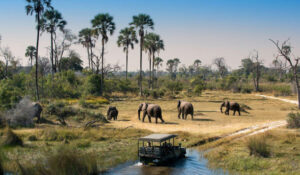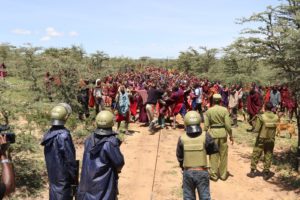by James L.Laizer
Tanzania Establishes Task Force to Enhance Carbon Trading Framework.
The Government of Tanzania has taken a major step toward advancing its climate and economic goals by launching a National Advisory Committee on Carbon Trading. The 20-member body was officially inaugurated on April 10, 2025, in Dodoma by the Minister of State in the Vice President’s Office for Union Affairs and Environment, Mr. Hamad Masauni. Comprising representatives from government ministries, public institutions, civil society, and the private sector, the committee has been given a one-month mandate to assess the current carbon trading landscape, identify challenges, and propose actionable recommendations. Its overarching goal is to enhance Tanzania’s participation in global carbon markets and ensure the country reaps substantial and equitable financial benefits.
Mr. Masauni emphasized that the committee will examine the full carbon trading value chain—from registration and measurement to transactions and agreements. He stressed the importance of improving transparency, accountability, and efficiency across the system. The committee is also expected to explore how key national infrastructure projects—such as the Julius Nyerere Hydropower Project (JNHPP), the Bus Rapid Transit (BRT) system, and the Standard Gauge Railway (SGR)—can leverage carbon trading opportunities to support environmental and financial sustainability. Additionally, the minister called for the development of a strong monitoring and evaluation framework to ensure that carbon projects deliver measurable outcomes aligned with Tanzania’s climate commitments and development goals.
Deputy Minister Khamis Hamza Khamis highlighted the need to educate the public about carbon trading to foster wider participation and local ownership. Meanwhile, Permanent Secretary Cyprian Luhemeja underscored that carbon trading presents a significant opportunity for Tanzania to benefit from climate finance, support social services, and stimulate green economic growth. With this strategic move, Tanzania positions itself to become a competitive player in the global carbon market, aligning environmental stewardship with national development. The committee’s work is expected to lay a strong foundation for a well-regulated, transparent, and inclusive carbon trading system that contributes meaningfully to the country’s long-term prosperity.
Restoring Tanzania: A Green Leap Toward Forest Revival and Climate Resilience
Tanzania is advancing a bold and visionary environmental initiative through the Sustainable Environmental Restoration and Biodiversity Conservation Project, aiming to restore 5.2 million hectares of degraded forests and landscapes. This effort is part of “The Restoration Initiative (TRI),” a global programme involving ten countries, including Kenya, China, Pakistan, and the Democratic Republic of Congo. Backed by a USD$11.2 million grant from the Global Environment Facility (GEF), the project is coordinated by the Vice President’s Office in collaboration with the United Nations Environment Programme (UNEP), the International Union for Conservation of Nature (IUCN), and seven district councils. Its core objectives include restoring degraded ecosystems in the Great Ruaha and Lake Rukwa Basins and reducing carbon emissions by an estimated 4.7 million tonnes by 2025 through the rehabilitation of 110,000 hectares of land. Project coordinator Dr. Damas Mapunda underscored the critical role of cross-sector collaboration, particularly with the private sector. However, private-sector involvement has remained modest due to limited awareness, few financial incentives, and a lack of scalable, bankable restoration models.
To encourage private sector engagement, the Restoration Factory Programme—jointly implemented by Bridge for Billions and Anza Entrepreneurs—is equipping green entrepreneurs with the tools to create sustainable and profitable ventures. To date, 46 entrepreneurs have enrolled, with 31 successfully graduating, supported by 14 trained mentors. Innovative ventures are already emerging. Ms. Annet Mutembei of Nishati Eco is producing alternative charcoal from agricultural waste, helping to combat deforestation and reduce health risks for women. Meanwhile, Mr. Deogratius Kapalata of KPLT Co. Ltd is repurposing coconut husks into clean briquettes and oil, tackling both energy and public health issues. Tanzania’s environmental restoration drive signals more than a policy shift—it is a transformative national movement. By blending innovation, entrepreneurship, and ecosystem recovery, the country is hopefully laying the foundation for a greener, more resilient, and economically inclusive future.
President Samia Launches Independent Commissions to Resolve Ngorongoro Land and Relocation Disputes
President Samia Suluhu Hassan has officially inaugurated two independent commissions aimed at resolving long-standing land disputes and evaluating the voluntary relocation of residents from the Ngorongoro Conservation Area. This action is expected to underscore the government’s commitment to finding sustainable and inclusive solutions that balance conservation efforts with community needs. Ngorongoro, a UNESCO World Heritage Site, has for decades been home to both wildlife and the indigenous Maasai pastoralists. However, growing human and livestock populations have raised ecological concerns. The number of residents has surged from 8,000 in 1959 to over 100,000 in 2021, while livestock numbers have grown from 260,000 in 2017 to more than one million. These increases have strained the ecosystem, creating conflicts between conservation policies and traditional livelihoods.
Historically, Tanzania has permitted indigenous communities to reside within certain protected areas. Yet tensions have grown due to reported land encroachments, restricted access to services, and allegations that basic provisions, such as food supplies, have been cut off to pressure communities into leaving. Speaking at the launch event on February 20, 2025, at the State House in Dar es Salaam, President Samia urged the commissions to approach the task with professionalism and objectivity. “I trust you will come up with lasting solutions on the issue, considering the national interest first,” she said.
The first commission, chaired by Justice Gerald Ndika, will investigate land dispute claims. The second, led by Mr. Musa Iyombe, will assess the voluntary relocation process. Both commissions are expected to include local community representatives to ensure inclusive dialogue and transparency. Their mandate is to deliver findings and recommendations within three months. This initiative follows President Samia’s pledge in Arusha on December 1, 2024, after engaging directly with Ngorongoro leaders and residents. By establishing these commissions, the government is aiming to demonstrate a proactive and people-centred approach to conflict resolution, though this may not be an easy task. If handled effectively, this process could serve as a blueprint for addressing similar challenges across Tanzania— preserving biodiversity while safeguarding the rights and dignity of indigenous communities.




